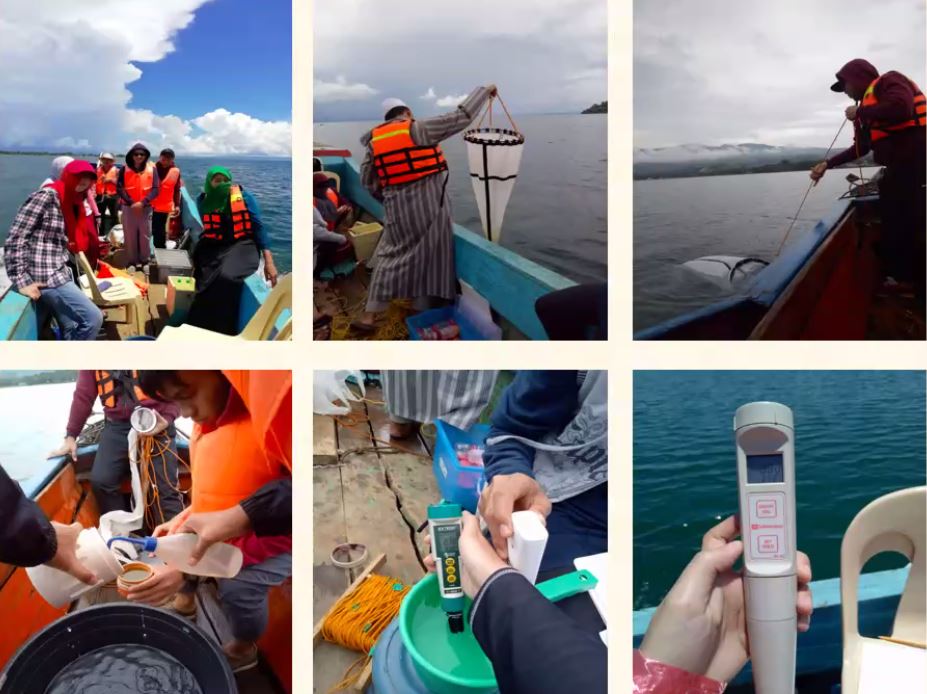
The Philippines’ Lake Lanao in Mindanao, one of the world’s remaining 17 ancient lakes estimated to be around 10 million years old, remains clean as it continues to be home to 18 endemic cyprinids (freshwater fishes related to the carps and minnows) that are found nowhere else in the world.
The water quality of Mindanao’s largest and the Philippines’ second-largest lake with a tectonic-volcanic origin located in Lanao del Sur province was determined to be clean in a study conducted by Mindanao State University (MSU) in Marawi City.
“Our Lake Lanao from all sampling sites is still pristine; our water is still clean,” disclosed MSU professor Fema M. Abamo, Ph.D. during her webinar presentation for the regional basic research caravan for Bicol, as conducted by the Department of Science and Technology-National Research Council of the Philippines (DOST-NRCP).
Five sampling sites namely Marawi City, Ramain, Balindong, Taraka, and Binidayan were monitored for two years by using the abundance of one-celled protozoan ciliates as bio-indicators of organic pollution.
The highest ciliate abundance was observed in the littoral zone of Balindong at 0.0061cells/mL during the dry season. The previous study of Beaver and Crisman (1989) categorized lakes as ultra-oligotrophic when their ciliate abundance is equal to or lower than 2.4cells/mL.
Lake Lanao, therefore, is ultra-oligotrophic having ciliate abundance below the set range in all sampling sites. Such lake category has very low nutrients, scarce growth of plants and algae, and high dissolved oxygen indicative of a clean, healthy, good water quality and not organically polluted lake.
Organic pollution occurs when large quantities of organic compounds are released into aquatic ecosystems. Sources of pollution usually come from wastes generated by agricultural, residential, and industrial activities. High levels also of inorganic nutrients such as nitrogen and phosphorus in water can cause an overgrowth of plants and algae. As plants and algae die, they become organic materials in the water.
Decomposition of these organic materials uses up high amounts of oxygen, thus depriving the fish population of needed oxygen that causes fish kills in the lake. These decaying organic compounds serve as substrates for the microorganisms, increasing the bacterial population which in turn supports the abundant growth of ciliates.
Ciliate abundance varied as the season changed, i.e., lower in the non-mixing season and higher in the dry season indicative of nutrient and organic load fluctuations in the lake as the season changed. Water samples for this study were obtained from 50-100 meters away from the lakeshore in the shallower littoral zone and towards the deeper open water in the pelagic zone.
The study results were corroborated by the findings of another group in the same program conducting the physical and chemical characterization of the lake and found the same that the lake is not polluted but still healthy and has good water quality.
The study, which was funded by the DOST-NRCP, was conducted during a three-year period, but was temporarily suspended and eventually allowed to resume after the Marawi siege.
“The lake was reportedly deteriorating due to increased human population and activities around the lake,” Abamo said, explaining why there’s a need to conserve the lake’s good condition, especially now that the people have resettled back near the lake after the Marawi siege.
The researchers suggested to the local government to strengthen their policies to maintain the healthy condition of the lake.
“We have recommended to the local government to create and implement stricter policies and ordinances to conserve the lake, and regulate and check both the residential and business establishments around the lake,” Abamo said.
For generations, Lanao Lake has been a potent natural resource that breathes life to the Maranaws, as a source of their food and water, livelihood, religious practices, transportation, and sports. But more than anything, the lake has shaped the Maranaw culture and tradition to what it is now and it has become imperative for the Maranaws to preserve its pristine beauty for a better and sustainable future.
Abamo is a member of DOST-NRCP’s 4,944 research pool involved in various scientific disciplines. For more webinars on basic research, interested parties can visit the NRCP’s Research Pod, a Facebook Page of the council.
The state of the Philippines’ seas has been studied during the 2020 pandemic and results show good water quality that hosts rich biodiversity. In Donsol, Sorsogon, 19 new whale sharks were sighted while Boracay island recorded new seagrass species thriving as a marine habitat.
SEND CHEERS in the comments below to the conservation teams caring for the Philippines’ ancient Lake Lanao in Mindanao.
Are you a Proud Filipino? Get more good news stories on Filipino Pride! Subscribe to GoodNewsPilipinas.com and our YouTube channel: Good News Pilipinas! TV










